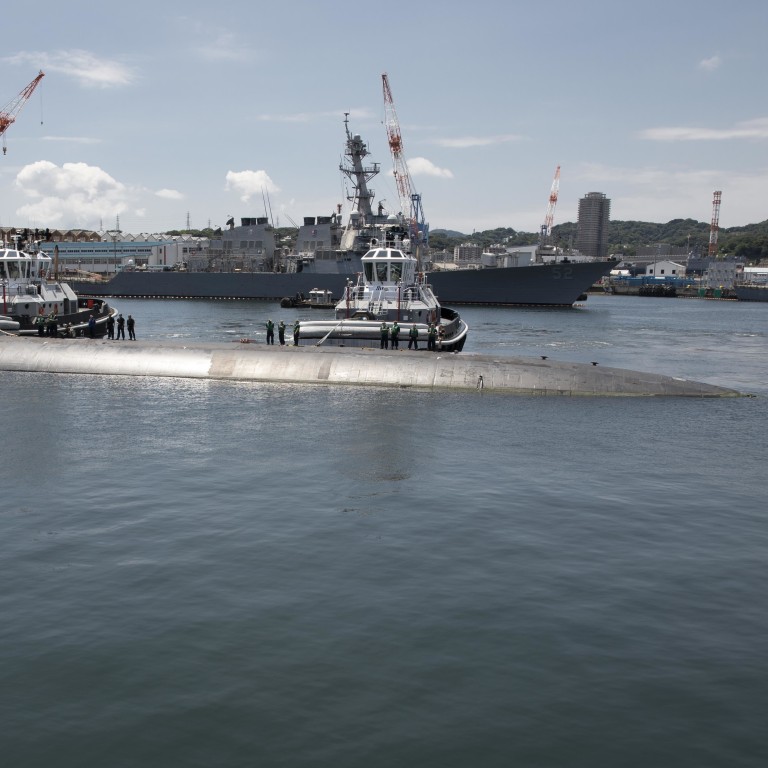
China demands answers on US nuclear submarine accident in South China Sea
- Chinese foreign ministry blames freedom of navigation operations as it seeks details on the where and how of collision and the likely nuclear risks
- Complex underwater terrain and ongoing nuclear submarine arms race increase risk of accidents in the region, analyst warns
“The United States should clarify more details of the occurrence, including the specific location, the intention of its navigation, what kind of object the sub had struck, whether it caused a nuclear leak that would contaminate marine environment,” Chinese foreign ministry spokesman Zhao Lijian said on Friday.
“It’s irresponsible and displays a lack of transparency on the part of the US to deliberately delay and conceal the details of the accident.”
“This is the root cause of the accident and poses a serious threat and major risk to regional peace and stability,” he said.

03:10
US submarine strikes unknown underwater object in disputed South China Sea
Zhao’s remarks came after the US Navy in a short statement on Thursday said that its USS Connecticut nuclear-powered attack submarine had “struck an object while submerged” on October 2, while “operating in international waters in the Indo-Pacific region”. The object was not identified.
Naval officials told US media that the collision occurred in international waters in the South China Sea.
There were “no life threatening injuries” among crew members while the submarine remained “in a safe and stable condition”, the navy statement said.
Two sailors on board sustained moderate injuries, while about nine others had minor injuries like scrapes and bruises, and the sub was heading towards the port of Guam, Associated Press reported, citing two US naval officials.

Collin Koh, a maritime security analyst at Singapore’s S. Rajaratnam School of International Studies, warned that the complex underwater terrain in the region and the ongoing arms race relating to nuclear submarines increased the risk of accidents.
“The regional waters are quite complex for submarine operations, such as narrow and shallow waterways that pose real challenges to submerged operations,” Koh said.
“The amount of man-made activities – intense traffic involving ships with deep drafts, offshore oil drilling, cable laying, etc, some of these works involve not just surface ships, but also underwater drones.”
Australia getting nuclear subs via Aukus ‘ups risk of conflict near China’
Zhou Chenming, a researcher from the Yuan Wang military science and technology institute in Beijing, said the Connecticut accident was a reminder of the fatal accident 11 years ago involving the K-141 Kursk, the Russian navy’s nuclear-powered cruise missile submarine.
The accident did not cause a nuclear meltdown or widespread marine contamination, because the bulkheads concerned were able to withstand explosions, allowing the sub’s two reactors to shut down automatically.
“Unlike the Russian sub with double hulls – an inner pressure shell and outer light hull, the US nuclear sub is a single-hull boat, which might cause some nuclear waste to leak out when struck severely,” Zhou warned.

